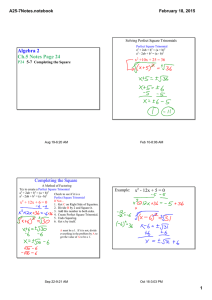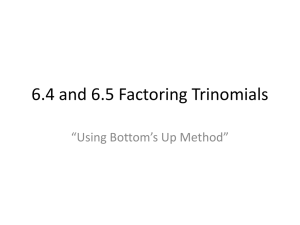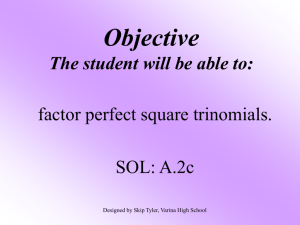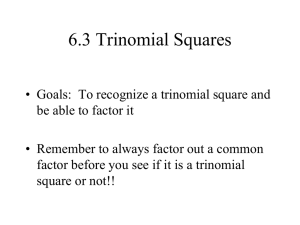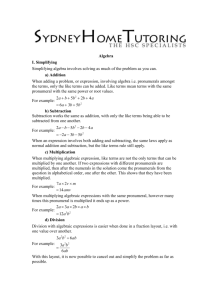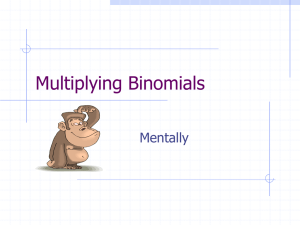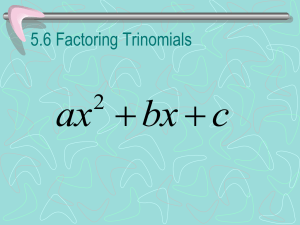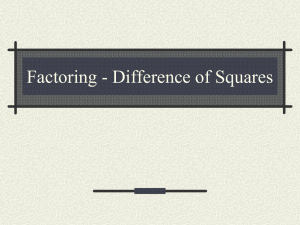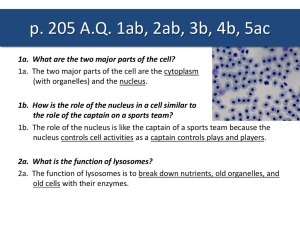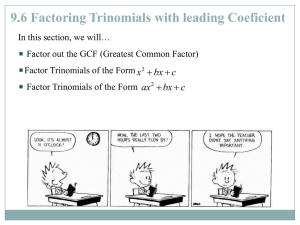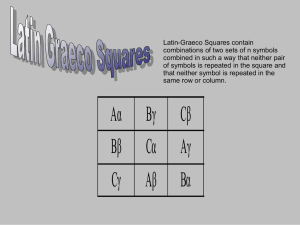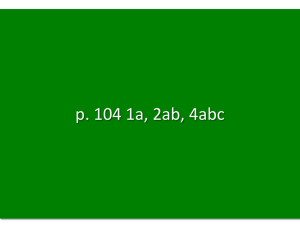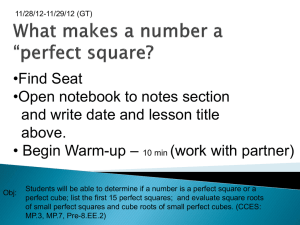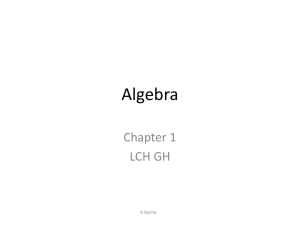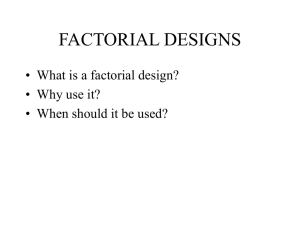Factoring Perfect-Square Trinomials and Differences of Squares
advertisement
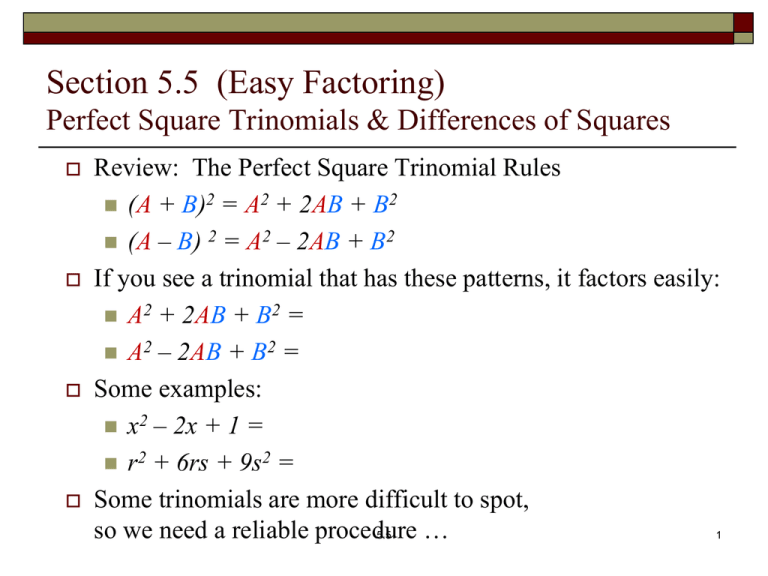
Section 5.5 (Easy Factoring) Perfect Square Trinomials & Differences of Squares Review: The Perfect Square Trinomial Rules (A + B)2 = A2 + 2AB + B2 (A – B) 2 = A2 – 2AB + B2 If you see a trinomial that has these patterns, it factors easily: A2 + 2AB + B2 = (A + B)2 A2 – 2AB + B2 = (A – B)2 Some examples: x2 – 2x + 1 = (x – 1)2 r2 + 6rs + 9s2 = (r + 3s)2 Some trinomials are more difficult to spot, so we need a reliable procedure … 5.5 1 Is the Trinomial a Perfect Square ? Recall the square of two binomials pattern we used when multiplying: (b)2 (±5)2 (b – 5)2 5.5 2 1: If necessary, Arrange in Descending Order Why? Because we will need to check the 1st and 3rd terms, then check the middle term x2 + 1 – 2x = x2 – 2x + 1 25 – 10x + x2 = x2 – 10x + 25 6rs + 9s2 + r2 = r2 + 6rs + 9s2 5.5 3 2: Remove Any Common Factors (always check this before proceeding) 3x2 – 15x + 12 = 3(x2 – 5x + 4) = 3(x – 1)(x – 4) Even when the 1st and 3rd terms are squares 16x2 + 16x + 4 = 4(4x2 + 4x + 1) = 4(2x + 1)2 Sometimes a variable factors out x2y – 10xy + 25y = y(x2 – 10x + 25) = y(x – 5)2 5.5 4 3: See if the 1st and 3rd Terms are Squares Check 36x2 + 84x + 49 (6x)2 … (7)2 Check 9x2 – 68xy + 121y2 (3x)2 … (11y)2 ok, might be! Check 16a2 + 22a + 63 (4a)2 … (7)(9) no, can’t be! 5.5 ok, might be! Ok, let’s see if the middle terms are right 5 4: See if the Middle Term is 2AB Check 36x2 + 84x + 49 (6x)2 … (7)2 2(6x)(7) = 84x ok, might be! yes, it is (6x + 7)2 Check 9x2 – 68xy + 121y2 (3x)2 … (-11y)2 ok, might be! 2(3x)(-11y) = -66xy ≠ -68xy no, not a PST Check 16a2 – 72a + 81 (4a)2 … (-9)2 5.5 2(4a)(-9) = -72a ok, might be! yes, it is (4a – 9)2 6 Are These Perfect Square Trinomials? x2 + 8x + 16 = (x + 4)2 (x)2 (4)2 2(x)(4) = 8x yes, it matches t2 – 5t + 4 = not a PST… but it factors: (t - 1)(t - 4) (t)2 (-2)2 2(t)(-2) = -4t no, it’s not -5t PST Tests: 1. Descending Order 2. Common Factors 3. 1st and 3rd Terms (A)2 and (B)2 4. Middle Term 2AB or -2AB 25 + y2 + 10y = (y + 5)2 y2 + 10y + 25 descending order (y)2 (5)2 2(y)(5) = 10y yes, it matches 3x2 – 15x + 27 = not a PST 3(x2 – 5x + 9) remove common factor (x)2 (-3)2 2(x)(-3) = -6x no, it’s not -5x 5.5 7 Difference of Squares Binomials Remember that the middle term disappears? (A + B)(A – B) = A2 - B2 It’s easy factoring when you find binomials of this pattern A2 – B2 = (A + B)(A – B) Examples: x2 – 9 = (x)2 – (3)2 = (x + 3)(x – 3) 4t2 – 49 = (2t)2 – (7)2 = (2t + 7)(2t – 7) a2 – 25b2 = (a)2 – (5b)2 = (a + 5b)(a – 5b) 18 – 2y4 = 2 [ (3)2 – (y2)2 ] = 2(3 + y2)(3 – y2) two variables squared constant 1st, variable square 2nd 5.5 8 More Difference of Squares Examples: x2 – 1/9 = perfect square fractions (x)2 – (⅓)2 = (x + ⅓)(x – ⅓) 18x2 – 50x4 = common factors must be removed 2x2[ 9 – 25x2 ] = 2x2[ (3)2 – (5x)2 ] = 2x2(3 + 5x)(3 – 5x) p8 – 1 = factor completely (p4)2 – (1)2 = (p4 + 1)(p4 – 1) another difference of 2 squares (p4 + 1)(p2 + 1)(p2 – 1) and another (p4 + 1)(p2 + 1)(p + 1)(p – 1) 5.5 9 What Next? Section 5.6 – Factoring Sums & Differences of Cubes 5.5 10
